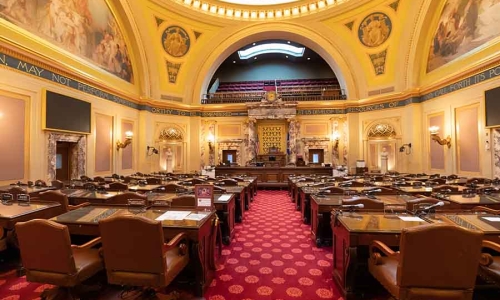How Branding, Not Just Marketing, Can Define Cannabis Industry Leaders

For cannabis companies, this revelation is not just an interesting statistic; it is a roadmap to success.
In a world increasingly defined by intangibles, brand-building has never been more paramount. And, never more so than in the continuously burgeoning and growing cannabis industry.
The shift in the American economy from the tangible — land, vehicles, factories — to the intangible — patents, copyrights and brands — reflects a broader transformation of market dynamics.
Nowhere is this metamorphosis more pronounced than in the burgeoning cannabis industry, where brand assets have become the cornerstone of a company’s value and market differentiation.
The former head of the Quaker Oats Company, John Stuart, once told a colleague: “If this business were to be split up, I would be glad to take the brands, trademarks and goodwill, and you could have all the bricks and mortar — and I would fare better than you.” The really valuable asset any company (or person) owns is the brand.
This value of brands and goodwill over bricks and mortar rings truer today in a landscape where intangible assets constitute 90% of the S&P 500’s enterprise value.
For cannabis companies, this revelation is not just an interesting statistic; it is a roadmap to success. With a product that is still battling regulatory scrutiny and social stigma, the brand becomes not just a marker of quality or origin, but a beacon of trust and legitimacy.
The allure of performance marketing, with its promise of immediate results and quantifiable metrics, is undeniable. However, the cannabis industry, with its unique challenges and opportunities, requires a different, more strategic and sophisticated playbook. Performance marketing tactics, while useful, offer only a short-term perspective in an industry that needs to be playing a long game.
Brand building, conversely, is an investment in the future. It encapsulates the essence of what a company stands for beyond its products: its values, its vision and its voice. In the cannabis sector, where products can often seem indistinguishable to the untrained eye, the brand is the differentiator that can command premium pricing, foster customer loyalty and create barriers to entry for competitors.
Moreover, a strong brand can attract and retain top talent, serve as collateral for financing and even withstand reduced marketing spend without diminishing customer loyalty. In essence, a strong brand is a reservoir of value that provides a buffer against market fluctuations and competitive pressures.
The importance of consistency and persistence in brand-building cannot be overstated. For cannabis companies, this means not just a one-time investment but an ongoing commitment to nurturing and evolving the brand narrative.
The consequences of neglecting this are evident in the volatile valuations of even the most high-profile brands. For instance, a recent report on X’s (formerly Twitter’s) declining brand value illustrates inconsistent branding and strategic shifts can have a significant impact on a company’s bottom line.
The narrative of intangible value is not limited to consumer-facing companies; it extends to B2B entities as well. As the cannabis industry matures, B2B players are increasingly recognizing the importance of brand equity and are investing accordingly — just look at Dutchie, Weedmaps and Leafly as prime examples.
In light of the crucial role that brand building, communications and PR play in the cannabis industry, here are some specific and actionable tips cannabis companies can apply:
Develop a Compelling Brand Narrative
Create an authentic and engaging brand story that resonates with your audience. This narrative should go beyond the product itself and tap into the values, mission and vision of your company and/or the people behind it. For example, focus on sustainability, innovation or community impact.
Action Steps: Host brainstorming sessions with your team to identify your core values and mission. Then, craft a story that weaves these elements together, ensuring it aligns with your target audience’s interests and values. Share this narrative consistently across all marketing channels — website, social media, packaging and PR materials.
Invest in Thought Leadership and Content Marketing
Establish your brand as a thought leader in the cannabis industry. This involves creating and disseminating valuable, insightful, educational and/or engaging content that addresses consumer needs, industry trends and regulatory changes.
Action Steps: Start a blog or video series where you discuss various aspects of the cannabis industry, from cultivation practices to legal developments. Collaborate with influencers or experts in the field to broaden your reach. Utilize SEO best practices to ensure your content is discoverable online.
Leverage Strategic Public Relations
Build relationships with media outlets and influencers who can help amplify your brand’s presence and credibility. PR is not just about getting coverage; it’s about creating the right kind of visibility.
Action Steps: Identify key journalists and influencers in the cannabis space and engage with them. Craft compelling press releases about your company’s milestones, partnerships, or unique selling propositions. Organize events or webinars that provide value to your audience and invite media participation.
Wrapping Up
By implementing these strategies, cannabis companies can build a strong brand presence, establish trust with their audience and create a robust foundation for long-term growth in a market where intangible assets are increasingly valuable.
The cannabis industry is uniquely positioned to benefit from a strategic emphasis on brand building. As performance marketing tactics ebb and flow in their effectiveness, the brand stands as a steadfast asset that can propel a company to market leadership. Therefore, for cannabis companies seeking to thrive, investing in brand building, communications and PR is not just a marketing strategy — it is an essential business strategy for sustainable growth and a competitive advantage.





